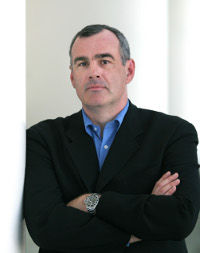The GE-Intel tie-up needs a big deal to be a big deal


It's a follow-on to last year's joint $250 million, five-year commitment to the space.
Before we do the happy dance over this, let's be clear about the steep hill facing both partners, especially Intel.
As I noted in May, Intel is still seeking a go-to-market strategy, and it has already been working with GE for a year. There is a lot of competition in the space Intel Health is trying to fill -- guilt as a market is pretty saturated.
GE is a major player in health care, starting from imaging and working backward to hospital software. Intel is not. Yet an Intel executive is heading this up. Why?
Here is a theory.
What the two companies need most is a business model that will pay for health maintenance. Today health is a free good -- doctors and hospitals are paid for procedures, for handling exceptions to health. If you're not sick they don't make money.
The two partners insist home monitoring has a hockey stick graph in front of it -- a $3 billion market for both the U.S. and Europe combined, rising to $7.7 billion in three years. But where will the money come from -- government, insurers, patients?
The real news here is that Louis Burns (above) is going to be looking at the problem fresh, from Intel's offices in Folsom, near Sacramento. (The picture is from the Intel web site.) He won't be at GE Healthcare's offices in Wisconsin, and he won't be anywhere near Intel's main Santa Clara campus either.
Expect the state of California to become a Burns target. The state has made deep cuts to its Medi-Cal program, it is desperate to do more with less, and the state is deep into campaign mode.
A policy alliance with either party, of course, carries a risk if the other party wins. Burns has to play nice with both sides, be ready to stand smiling at the back of whoever wins, and then be ready to scale up quickly.
So before this becomes a political argument, let me add two other prospects, both also within easy reach of Folsom. Kaiser and Intermountain. Both have business models that take savings from health monitoring to the bottom line, both need scaled solutions to make things work.
Proving the case for monitoring with a high-profile, scaled customer would make the GE-Intel venture a success. Failing that, given the resources being committed, would be failure.
Burns needs to be more of a salesman than an engineer to make this deal work. (Maybe a bit of a politician as well.) And if it takes an Immelt or Otellini visit to get to a closing, he has the internal credibility to make it worth their while.
Stay tuned.